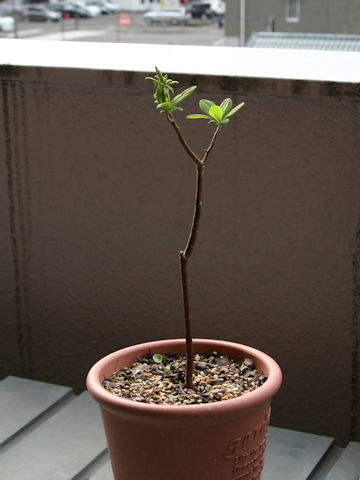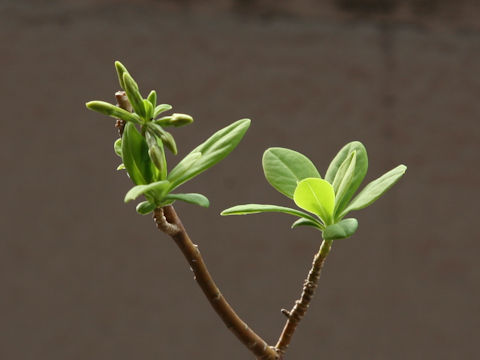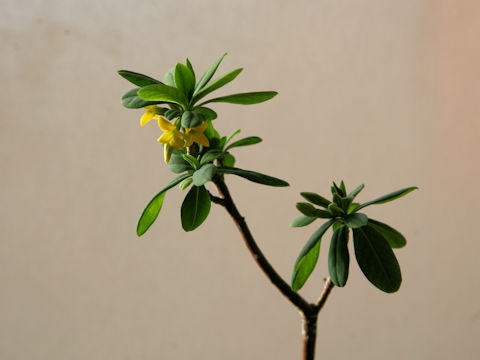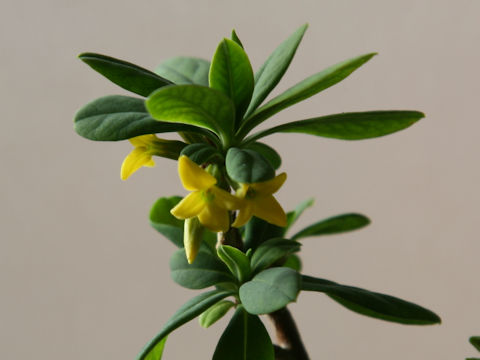
|
The "Oni-shibari" (Daphne pseudo-mezereum) belongs to Thymelaeaceae (the Akia family). It is an evergreen shrub that is distributed from Fukushima Prefecture of Honshu west to Shikoku and Kyushu in Japan, as well as on the Korean Peninsula and north-east China. It grows in deciduous forests and is 1-1.5 m high. Branches are well branched. The leaves are oblong, semi-leathery, entire and alternate. The leaves are deciduous from July to August and new leaves appear from August to September. From February to April, 2-10 pale yellow-green flowers are produced in bunches in the leaf axils. The calyx lobes are petal-like, and have four lobes at the tip. The fruit is an elliptic, liquid berry, which ripens to red from July to July. The Japanese name "oni-shibari" means that the bark is so tough that it would not break even if a "oni" (ogre) were bound to it. It is also known as "Natsu-bozu" (summer stripped) in Japan. In Chinese, it is called "東北瑞香" (dong bei rui xiang).
|



